

Advanced state of the art facilities at your doorstep.
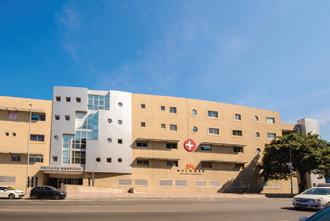
Cnr Voortrekker & AJ West Street T 021 948 81 31

Clinic Road, Gatesville T 021 637 8100

John Ross Eco Junction T 035 791 5300

Imam
T 021 683 0540
Road,

Keysers & Main Road T 021 764 7500

Symphony Walk, Town Centre T 021 392 3126
Cnr
148
Haron
Claremont
Melomed Bellville
Melomed Gatesville
Melomed Richards Bay
Melomed Tokai
Melomed Mitchells Plain
Melomed Claremont
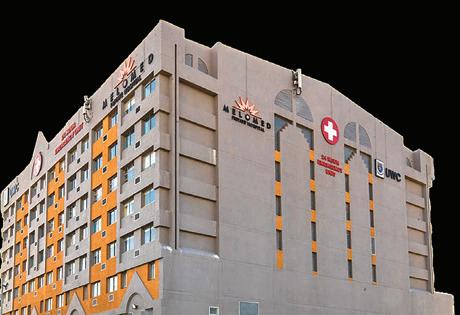
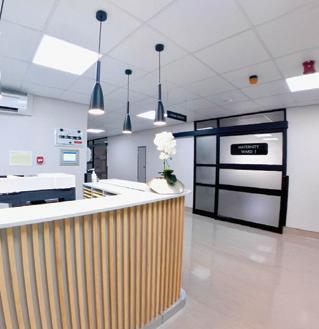
A New Era of Maternity Care at Melomed Mitchells Plain!
Melomed Mitchells Plain is proud to introduce our newly upgraded maternity unit – designed with you in mind!
Spacious & Modern – Thoughtfully designed for your comfort.
State-of-the-Art Equipment – Ensuring the highest level of care.

Beautifully Furnished – A warm, welcoming environment.
Melotainment iPad Devices – Enjoy entertainment at your fingertips.
Private Ward Option – Available on request for extra exclusivity.
With expert obstetricians, dedicated nursing staff, and a hospital group that truly cares, your journey into parenthood will be a special experience.
Made for the community – because we are here for you!
Melomed – A hospital group that cares.
Book your maternity tour today: 021 392 3126 www.melomed.co.za






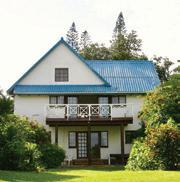




Hope restored: Melomed Bellville neurosurgeon helps patient regain independence.
New & Now: Keep moving to stay out of the hospital
First Aid: Burns
All About: All about worms
Diagnosis: Hydatid disease
Infographic: Magic numbers – Know your numbers
Travel: Budget-friendly Winter breakaways
Cardiovascular disease in end-stage renal disease (esrd) - part 2
United imaging healthcare uMR 780 MRI at Melomed Gatesville Recipe: One-pot chicken

PUBLISHER: Health Bytes CC
CONTACT: christa@health-bytes.co.za
GRAPHIC DESIGNER: Marius Laubser TEL: 021 913 0504

Hope Restored: Melomed Bellville Neurosurgeon Helps Patient Regain Independence.


What begins as a nagging neck pain can often be brushed off as insignificant—until it silently robs you of your independence. For one patient at Melomed Bellville, this was her reality. Everyday tasks like bathing, turning in bed, or even holding a cup became impossible. Her world was closing in— until she met Dr. Appiah Baiden, Neurosurgeon at Melomed Bellville hospital.
A Hidden Threat Behind the Pain
After a thorough assessment, Dr. Baiden diagnosed her with cervical spondylosis with radiculopathy—a condition where degenerative disc disease compresses spinal nerves. What made her case particularly complex was a rare congenital fusion between two vertebrae (C4 and C5), accelerating the breakdown of the surrounding discs. Her scans revealed severely herniated discs at C5/C6 and C6/C7, pressing on both her spinal cord and nerves. This explained her weakening grip, tingling limbs, and escalating loss of control. Without timely intervention, she faced the very real risk of permanent disability, including loss of bladder control.
Timely Surgery, Proven Results
Dr. Baiden and his team performed an Anterior Cervical Discectomy and Fusion (ACDF)—a gold-standard surgery where the damaged discs are removed and the space is fused to stabilize the spine and relieve nerve pressure. Research confirms that early surgical intervention for cervical radiculopathy leads to significantly better outcomes, including faster recovery and long-term functional improvement (Çelikoğlu & Demir, 2023; Goh et al., 2019).
Dr. Andrew Appiah Baiden’s Expertise at Melomed Bellville Changes the Course of a Patient’s Life.
Rehabilitation: The Other Half of Healing
While the surgery was a technical success, Dr. Baiden emphasizes that recovery doesn’t stop in the operating theatre. The patient underwent a tailored rehabilitation program to rebuild muscle strength, improve coordination, and relearn functional movements. “Rehab is not optional,” says Dr. Baiden. “It’s the bridge between surgery and full recovery.”
Gratitude Shared with the World
Just seven days post-surgery, the patient was discharged—and shared her joy and gratitude on TikTok. Her heartfelt video, captioned “Thankful for an awesome neurosurgeon & his team… All Glory to God…”, quickly gained attention. In a few seconds of footage, she shared what words often cannot: the joy of being given her life back.
A Message of Hope
This case is a powerful reminder that cervical spine conditions, while serious, are treatable—especially with early diagnosis, skilled surgical care, and dedicated rehabilitation.
Dr. Appiah Baiden continues to lead life-changing interventions at Melomed Bellville, where compassionate care meets clinical excellence. And sometimes, that care doesn’t just change one life— it inspires thousands.

KEEP MOVING TO STAY OUT OF THE HOSPITAL!
WANT TO PREVENT FUTURE HOSPITALISATION?
Go for a walk or play tag with your kids in the backyard. That’s the takeaway of a study in BMC Geriatrics that followed 25,000 people over 20 years and asked them about their activity levels at home and work.
People who were already active before the study or who became active during the study period were 25 to 34 percent less likely than inactive people to spend more than 20 days in the hospital each year. Even better news: You don’t have to become a marathon runner or a gym regular. Even modest increases in activity were associated with reduced risk of hospitalisation.

2 HOURS
People with diabetes who walk at least two hours each week are less likely to die of heart disease than people with diabetes who are sedentary, research has shown.
Sources: Harvard Health Publishing
BURNS

Burning is the greatest cause of unnatural death in South African children under the age of five - it commonly results from the sun, scalding by hot liquids, fire, electricity or chemicals.
Specifically young children have extremely sensitive skin and even a burn from a cup of coffee can prove fatal. If you know what to do when someone is burnt, you may be able to limit injuries. Better still, try to prevent a tragedy from happening in the first place. Pain is not an indicator of the severity of a burn. Burns are classified into first-, second- and thirddegree burns, according to the depth and size of the burn.
First-degree burn (superficial thickness). The least serious are those in which only the outer layer of skin (epidermis) is burned. The skin is red - looks like mild sunburn and maybe a bit swollen and painful.
Second-degree burn (partial thickness). Both the first and second layers of skin (epidermis and dermis) are burned. Blisters develop and the skin takes on an intensely reddened, blotchy appearance. Second- degree burns are very painful.
WHAT TO DO FIRST
Remove the source of the burn.

For minor burns including second-degree burns limited to an area no larger than 5 cm in diameter, take the following action:
Cool the burn. Hold the burned area under running cold water for 10-30 minutes, immerse in cold water or cool with a clean cloth or sheet soaked in cold water. Cooling the burn reduces swelling by conducting heat away from the skin.
Remove clothing and jewellery from the burnt area as swelling could make it difficult to remove later.
Cover the burn with a sterile gauze bandage. Wrap it loosely to avoid putting pressure on burned skin. Bandaging keeps air off the burned skin, reduces pain and protects blistered skin.
Take an over-the-counter pain reliever, such as ibuprofen and paracetamol. Never give aspirin to children or teenagers.
Third-degree burn (full thickness). The most serious burns are painless and involve all layers of the skin. Fat, muscle and even bone may be affected. Areas may be charred black or appear hard and white. The burnt area will be swollen and may have burst open, but because of the extensive damage to nerve endings, it may not be painful.

FOR MAJOR BURNS CALL AN AMBULANCE.
In the meantime:
Cover the area of the burn. Use a cool, moist, sterile bandage, cloth or towel.
Moisten the patient's lips with water and keep him/her calm.
Check for signs of circulation (breathing, coughing or movement). If there is none, begin cardio- pulmonary resuscitation (CPR) if you are trained to do so.
CAUTION
Don't use ice, butter, vaseline or anything else. Putting ice directly on a burn can cause frostbite, further damaging the skin.
Don't break blisters as they protect against infection and help the healing process.
Don't remove clothing that sticks to the skin.
948 8131
021 637 8100
Don't remove burnt clothing near or at the site of the burn. However, make sure the victim is no longer in contact with smouldering materials or exposed to smoke or heat.
Don't immerse severe large burns in cold water as this could cause shock.
CALL AN AMBULANCE OR GET HELP IMMEDIATELY IF:
• The burn was caused by chemicals or electricity.
• The burn area is larger than the person's palm.
• The person has inhaled smoke.
• The burn is on the face, genitals, joints, hands or feet.
• The victim has a temperature, or feels hot and cold (shock).
035 791 5301
021 392 3126
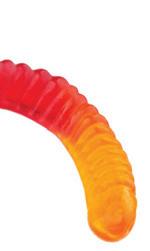






WHAT ARE THREADWORMS?
Threadworms (also known as pinworms) are the most common type of parasitic worms affecting children, particularly those between 4-11 years of age. While these parasites aren't dangerous, they can cause discomfort and spread easily among family members. Understanding their lifecycle and transmission is crucial for effective treatment and prevention.
HOW DO CHILDREN GET THREADWORMS?
Most commonly, children become infected when they accidentally swallow worm eggs after touching contaminated surfaces. This often happens when they put their hands in their mouths after contact with infected persons. Additionally, handling contaminated items such as toys, bedding, or dusty surfaces can lead to infection. Children who bite their nails after exposure to worm eggs are particularly vulnerable to infection.

ALL ABOUT WORMS


THE INFECTION CYCLE
Understanding the lifecycle of threadworms helps explain why they can be persistent and difficult to eliminate without proper treatment. The cycle begins when eggs are swallowed and travel to the small intestine. Once there, the eggs hatch in the intestine and develop into adult worms. They then lay new eggs around the anus, causing intense itching. When itching leads to scratching, eggs can easily get trapped under fingernails. If these contaminated fingers touch the mouth, the eggs are ingested, thus continuing the cycle.
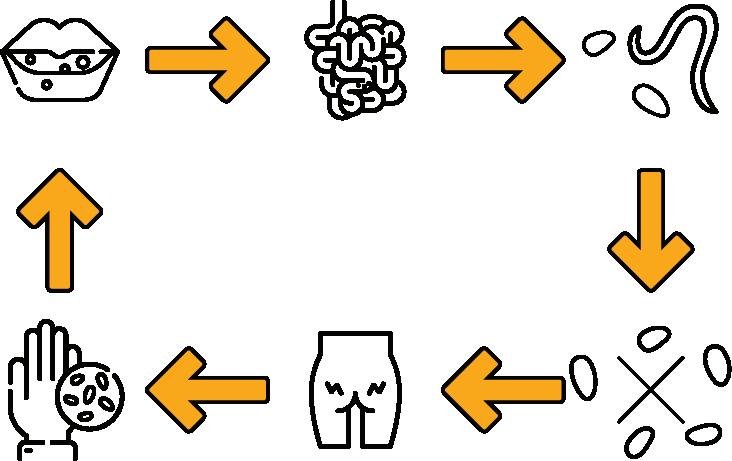
THREADWORM LIFECYCLE
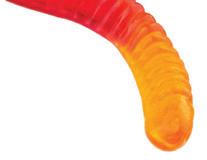








A PARENT'S GUIDE TO UNDERSTANDING AND
TREATING THREADWORMS
SIGNS AND SYMPTOMS
Parents should be vigilant for several telltale signs of threadworm infection. The most common symptoms are easily recognizable and include:
Intense itching around the bottom (anus) area, especially at night
Inflammation of the anal area
Light skin appears red and dark skin may look brown, purple, or grey
Restlessness
Some children may develop less common but notable symptoms. These include visible white worms in your child’s faeces (poo), which are typically 8-13mm long and look like pieces of white thread. They can sometimes be mistaken for toilet paper fragments.
Some children might experience abdominal pain, and girls may develop vaginal irritation. In some cases, children might experience nausea and vomiting, though this is less common.

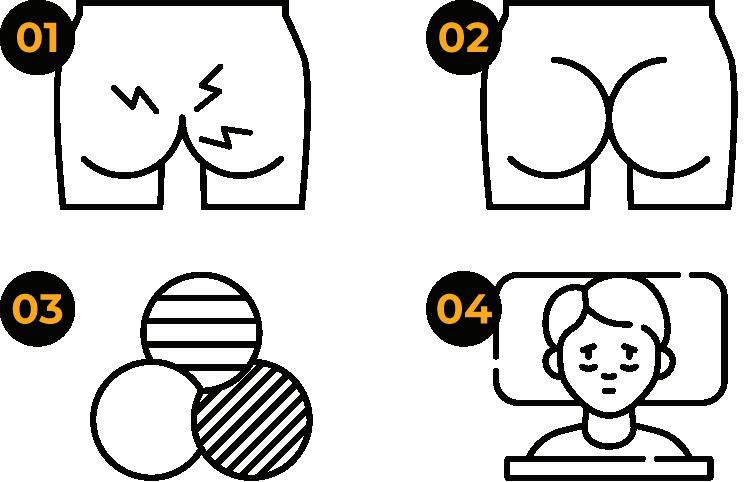
WHEN TO SEEK MEDICAL HELP
While threadworm infections are generally manageable at home, certain situations warrant professional medical attention. Parents should consult their healthcare provider if your child:
• Shows no improvement after treatment
• Passes large worms
• Experiences persistent stomach pain
• Shows signs of low energy
• Has ongoing nausea or vomiting >>
TREATMENT APPROACH
Threadworms in kids are easy to treat and usually aren’t serious.
• The medical treatment is straightforward and typically involves over-the-counter antiparasitic tablets. It's crucial that all household members receive treatment simultaneously to prevent reinfection.
• Although medicine takes care of the worm infection, the itching may continue for about a week. Your doctor also might give your child a cream or other medicine to help stop the itching.
• Parents should monitor their children for symptom improvement and ensure they complete the full course of treatment as prescribed.
PREVENTION STRATEGIES
Preventing reinfestation and spread requires a comprehensive approach that combines personal hygiene measures with thorough household cleaning:
Maintaining strict personal hygiene is essential in preventing threadworm infections:
• Regular hand washing, especially after toilet use and before meals
• Regular nail trimming
• Daily morning showers or baths
• Discourage bottom scratching and thumb-sucking
Creating a clean environment is crucial in preventing reinfestation:
• Daily washing of clothes and bedding in hot water
• Regular cleaning of toilet seats and potties
• Thorough household cleaning
• Treatment of all family members when one person is infected
Remember that threadworms are quite common among kids and aren't harmful. By taking medicine and following some prevention tips, you'll be rid of the worms in no time.


Sources: Raising Children - raisingchildren.net.au/ guides/a-z-health-reference/worms NHS: www.nhs.uk/conditions/threadworms/
HYDATID DISEASE


By Dr Mohammad Arif
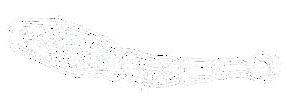
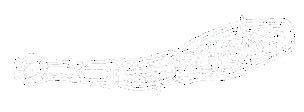



Hydatid disease, or cystic echinococcosis, is a parasitic infection caused by a tapeworm. It can cause cysts to grow in your liver and other organs. The infection is common in rural, underdeveloped areas where people raise livestock. Hydatid disease is common in Eastern Cape, Kwa-Zulu Natal and Limpopo province in South Africa.
Hydatid disease causes cysts (liquid-filled growths) to develop in your liver or other organs. Hydatid cysts can lead to serious health complications if they aren’t treated.
Who gets hydatid disease?
Hydatid disease tends to occur in rural, poor or underdeveloped areas. It’s especially common among people who raise sheep or other livestock and also have dogs. Sheep are the primary host of the parasite and dogs get the parasite when they eat an infected sheep.
The risk of hydatid disease increases if you:
• Deworm or handle infected dogs at home.
• Drink or eat in a space shared with infected dogs.
• Live in an unhygienic environment.
• Slaughter your own sheep or other livestock for food.
Is hydatid disease contagious?
Hydatid disease isn’t contagious, meaning it doesn’t spread through person-to-person contact. So you can’t get the disease by touching or being near someone who has it. A person has to ingest the parasite to get the infection.
What’s the difference between cystic echinococcosis and alveolar echinococcosis?
Alveolar echinococcosis (AE) is another type of parasitic infection caused by tapeworms in the genus Echinocococcus. But AE is usually transmitted tohumans through foxes and coyotes, not sheep. AE is more serious than cystic echinococcosis (CE). AE can lead to cysts in your liver, lungs and brain. The cysts aren’t cancerous but spread similarly to invasive tumours.
What’s the difference between a hydatid cyst and a simple liver cyst?
A hydatid cyst is the result of a parasitic infection. Simple liver cysts, on the other hand, are usually present at birth. Hydatid cysts can grow large enough to affect liver function. Simple liver cysts rarely get this big. Hydatid cysts and simple liver cysts also require different treatments.
How common is hydatid disease?
Hydatid disease is common in Eastern Cape, Kwazulu-Natal and Limpopo provinces in South Africa. But it’s a growing public health concern in poor and rural areas of Africa, Europe, Asia, the Middle East and Central and South America. Between 2 million and 3 million human echinococcal infections occur each year worldwide, and hydatid disease accounts for about 95% of those infections. >>

Is hydatid disease contagious?
Hydatid disease isn’t contagious, meaning it doesn’t spread through person-to-person contact. So you can’t get the disease by touching or being near someone who has it. A person has to ingest the parasite to get the infection.
What’s the difference between cystic echinococcosis and alveolar echinococcosis?
Alveolar echinococcosis (AE) is another type of parasitic infection caused by tapeworms in the genus Echinocococcus. But AE is usually transmitted to humans through foxes and coyotes, not sheep. AE is more serious than cystic echinococcosis (CE). AE can lead to cysts in your liver, lungs and brain. The cysts aren’t cancerous but spread similarly to invasive tumours.
What’s the difference between a hydatid cyst and a simple liver cyst?
A hydatid cyst is the result of a parasitic infection. Simple liver cysts, on the other hand, are usually present at birth. Hydatid cysts can grow large enough to affect liver function. Simple liver cysts rarely get this big. Hydatid cysts and simple liver cysts also require different treatments.
How common is hydatid disease?
Hydatid disease is common in Eastern Cape, Kwazulu-Natal and Limpopo provinces in South Africa. But it’s a growing public health concern in poor and rural areas of Africa, Europe, Asia, the Middle East and Central and South America. Between 2 million and 3 million human echinococcal infections occur each year worldwide, and hydatid disease accounts for about 95% of those infections.
Symptoms and causes
Hydatid disease may not cause any symptoms for many years. But as hydatid cysts grow in your liver, lungs or other organs they may cause: Is hydatid disease contagious?
Bloody stools
Coughing
Discomfort in your abdomen or chest
What are the potential complications of hydatid disease?
The cysts can grow large enough to prevent affected organs from working properly. The cysts can also rupture, which can lead to life-threatening complications. Signs of a ruptured hydatid cyst may include:
• Anaphylaxis (serious allergic reaction)
• Severe abdominal pain
• Sudden death
How is hydatid disease transmitted?
People can get hydatid disease if they come into contact with the faeces (poop) of a dog that contains the parasite’s eggs. Over time, the parasites grow larger and turn into a cyst. Transmission can happen through:
• Drinking contaminated water.
• Eating infected soil found on vegetables, greens or berries.
• Petting or handling an infected dog. >>
Hives or skin rash
Jaundice (yellow skin)
Lump or mass in your midsection
Nausea and vomiting
Shortness of breath
Unexplained weight loss

Diagnosis and Tests Management and Treatment
How is hydatid disease diagnosed?
Imaging exams and blood tests are the most common ways to diagnose hydatid disease. Blood tests can show elevated levels of antibodies to the echinococcal infection. Imaging exams show the size, shape and location of the cysts.
Your healthcare provider will use an X-ray, CT scan or ultrasound to examine the cysts. Hydatid cysts have a few characteristics that make them appear differently than simple liver cysts in imaging scans, including:
• Collapsed cyst inside the cyst wall.
• Multilayered cyst wall.
• Thick or calcified cyst wall.

How is hydatid disease treated?
Treatment for hydatid disease depends on the size and location of the cysts. The most common treatments include:
Medication:
Small, superficial cysts in one location may respond to antiparasitic drugs called benzimidazoles. Benzimidazoles destroy parasites and shrink cysts. Your healthcare provider may combine medication with aspiration or surgery.
PAIR (puncture, aspiration, injection, re-aspiration):
The PAIR technique uses a needle or catheter to drain the cyst. A parasitefighting chemical is injected into the cyst before it’s drained again. Your healthcare provider repeats the process until the cyst is completely emptied.
Surgery:
Large, deep cysts may need to be removed with surgery. Surgical cyst removal involves removing part or all of the cyst or part of your liver. Surgery risks spilling parasites into your abdominal cavity, so only an experienced healthcare provider should perform the procedure.
Prevention
How
can I prevent hydatid disease?
Preventing the spread of parasites is the only way to control hydatid disease. People at risk of contracting the infection should:
• Avoid eating or drinking anything that may have come into contact with dog faeces.
• Have dogs dewormed by a trained veterinarian, not at home.
• Not have contact with dogs that may be infected.
• Not slaughter sheep or other livestock at home.
• Prevent dogs from eating infected sheep.
• Wash fruits and vegetables before eating them.
• Wash your hands with soap and water frequently, especially before preparing food or after handling dogs.
Outlook / Prognosis
What’s
the outlook for someone with hydatid
disease?
Untreated hydatid disease can be fatal. Cysts may get so large that they cause the affected organ to stop functioning completely. Ruptured cysts can cause anaphylaxis, which is a life-threatening allergic reaction.
When should I see my healthcare provider about hydatid disease?
If you experience any of the symptoms of hydatid disease, see your healthcare provider right away. Tell them if you’ve been in a high-risk environment for hydatid disease. This information can help them distinguish between hydatid cysts and simple cysts. Early diagnosis and treatment greatly lower the risk of serious health complications or death.
A note from Melomed Mitchells Plain Hospital:
Hydatid disease, also called cystic echinococcosis, is a parasitic infection caused by a tapeworm. People can get the disease if they come into contact with dog feces containing the parasite. Hydatid disease causes cysts to grow in organs, usually your liver. Treatment involves medication, aspiration (cyst drainage) or surgery. Untreated hydatid disease can lead to serious health complications. A good number of population residing in Mitchells Plain, Khayelitsha area who came from Eastern Cape and Natal and regularly visits their home towns during festive seasons are to be very careful for this infection.
Sources and references consulted: Cleveland Clinic: https:// my.clevelandclinic.org/health/ diseases/23558-hydatid-disease COMPILED BY

DR. MOHAMMAD ARIF MBBS, FRCS, FCS
Dr. Arif is a General Surgeon and currently practices at Melomed Tokai and Melomed Mitchells Plain.
Tel: 021 764 7500 | 021 391 0586
Email: drarif.practice@gmail.com

DO YOU KNOW YOUR NUMBERS?
MAGIC NUMBERS
Take a look to see whether yours add up to a healthy you...

24.9
Maximum body mass index (BMI)
The healthy range for body mass index or BMI is 18.5 to 24.9. The BMI measures your weight in relation to your height. People with a BMI over 25 are overweight. If you have a BMI of 18.5 or below you are considered underweight.
Maximum number of centimetres your waist should be, if you’re a woman
More than that and you’ll up your risk of heart disease. (For men, the maximum measurement is 100cm.)
Excess abdominal fat can contribute to high blood pressure and cholesterol.


48
Maximum number of hours you should wait between workouts
Researchers found that when you’re inactive longer than two days, the kilojoules normally burnt during exercise start to be stored as fat. Fat cells in lab rats can increase in size by 25% after 48 hours of missed workouts.

120/80
Normal blood pressure
A normal blood pressure is 120/80 or below. The first number measures the pressure in your arteries when your heart contracts. The second number indicates the number when your heart is relaxing. High blood pressure is anything above 120/80! Having too high a blood pressure puts you at a greater risk of developing heart disease.
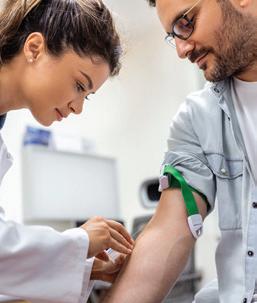
5
Maximum total cholesterol level (mmol/L)
Total cholesterol level (the amount of fat in your blood) should be below 5 mmol/L, an LDL cholesterol level below 3 mmol/L, and HDL cholesterol levels above 1.2 mmol/L for women or 1.0 mmol/L for men. Fasting triglyceride levels should also be below 1.7 mmol/L. If your total cholesterol level is too high (7.5 mmol/L and above), you are at a greater risk of having a heart attack or stroke.
60-80
Number of times per minute your heart should beat at rest
Extremely fit athletes may have a lower rate, but anything under 60 beats per minute (especially if accompanied by dizziness) can indicate an irregular heartbeat or a thyroid disorder. A rate above 100 is a sign of poor fitness. Take your pulse while resting (count the beats for 10 seconds and multiply by six).
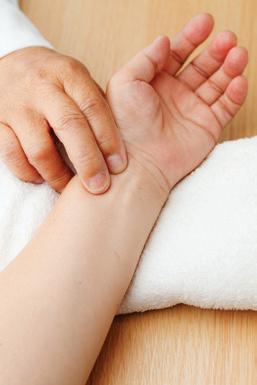

5.6
Maximum blood glucose level (mmol/L)
For most adults, healthy fasting blood glucose levels are typically between 3.9 to 5.5 mmol/L. At between 5.6 to 6.9 you are prediabetic with an increased risk of heart disease. Two hours after eating, levels should generally be below 7.8 mmol/L. A level of 7.0 mmol/L or higher, measured on two different days, indicates diabetes with a risk of damage to the eyes, kidneys, blood vessels, heart and nerves as well as dementia. These ranges can vary slightly depending on individual factors and laboratory methods, so it's always best to discuss your specific results with your doctor.

WINTER BREAKAWAYS
People often see the winter months as a chance to save up for the upcoming summer holiday season, but letting your travels take a backseat is no way to live! Here are some budget-friendly places all over South Africa where you can enjoy the comforts of home and even a few luxuries that ensure a memorable break away without breaking the bank. You really can have your cake and eat it, too!
BEACH WALK WESTERN CAPE
We’re starting with a cosy self-catering home in the heart of Pearly Beach. Beach Walk boasts stunning sea views from its very own covered wooden deck. If there was ever a spot where you could relax and recharge to your heart’s content, this is it! An indoor braai ensures winter’s chills won’t stop you from enjoying a truly South African weekend in front of the fire. As if all of this isn’t already enough to make you plan a trip, the house is only a short walk away from a white sandy beach.
LANK-GEWAG COTTAGES WESTERN CAPE
Come and enjoy a stay on a working farm just a few kilometres from Montagu. Sleep in a rustic cottage with its original thick clay walls and savour a little downtime in the hot tub while overlooking the surrounding farm and nectarine trees. Make the most of the day with the built-in braai on the patio and share a laugh with those who matter most. Your four-legged friends are also welcome here.


SCHEEPERSFONTEIN GAUTENG
Ditch the city for a little adventure at a self-catering house with Dutch architecture in Pretoria East that is ideal for a family getaway with its tranquil surroundings. Outside, there is a braai area and outdoor seating where you can relax with a sundowner, as well as a large veranda with beautiful views of the horse farm. Pets are welcome by prior arrangement, so everyone will get to revel in the natural beauty and tranquillity of the area.
BEDFORD MANOR GAUTENG
Bedford Manor offers accommodation in two apartments in Centurion, each with its own unique style and decor. One has a rustic boho style and boasts a balcony with views of the nature reserve, while the other is a retro-vintage apartment with a patio and views of the wetlands. Both offer access to a lap pool, and there is a covered braai area with outdoor seating where a lovely evening by the crackling fire awaits. Various restaurants, shops, attractions and nightlife are all only a short drive away for those who are looking for a little more action.
HERON’S HAVEN MPUMALANGA
This beautifully restored cottage from the late 1800s offers a heavenly breakaway surrounded by nature on the wetland of the picturesque town of Wakkerstroom and boasts views of the mountains in the distance. Heron’s Haven has everything you need for a revitalising stay, such as a hammock, a coal stove to fend off the winter cold and braai facilities. You can also bring your furry friend to enjoy the fresh air of the countryside with you.
GROENDRAAI RIVER COTTAGES LIMPOPO
For those seeking a memorable escape, however fleeting, Groendraai River Cottages in Vaalwater is just the right place and is ideal for those en route to Lephalale from Johannesburg. All three cottages have outdoor wood-fired hot tubs, private braai facilities and a large patio from where you can listen to the sounds of the Bushveld. If a challenge is what you seek, feel free to try your hand at catch-and-release fishing in the Mokolo and Sterkstroom Rivers or paddle in one of the kayaks available.
STONEHAVEN CLARENS FREE STATE
Stonehaven Clarens is located in the centre of Clarens and boasts views of Horeb Mountain and a portion of the golf course. Book one of the rooms in the main building or one of the log cabins, all with patios and braai facilities – a South African necessity. This stay is within walking distance of restaurants, art galleries and the Clarens Brewery. If you’re looking for adventure, activities such as walking, hiking, 4×4 trails and river rafting are all available in the area. >>





BETHULIE GUEST FARM FREE STATE
Nestled in the serene Karoo town, this guest house offers a charming retreat steeped in history and comfort. Designed by a renowned architect in 1924, this lovingly restored farmhouse features original wooden floors and antique furnishings, creating a warm and inviting atmosphere. Guests can unwind by the open fireplace for a perfect chilly winter evening or enjoy luxuries like air conditioning, electric blankets and home-cooked meals crafted from seasonal farm produce that are served in the main dining room, where an open fire adds to the homely ambience. With its blend of historical charm and modern comforts, Bethulie Guest Farm provides an ideal setting for a peaceful winter getaway.
AUSTREY LODGE EASTERN CAPE
Tucked away in the foothills of the Winterberg Mountains near Adelaide, Austrey Lodge offers a serene winter escape. This self-catering stone cottage accommodates up to five guests and features a cosy fireplace – perfect for warming up after a day of exploring the surrounding trails or fishing in the nearby trout dam. The lodge's covered deck includes a hot tub and braai area, allowing guests to unwind while taking in panoramic views of the tranquil landscape. With occasional snowfall adding to its charm, Austrey Lodge provides a peaceful retreat ideal for families or couples seeking a secluded getaway.
SPERRGEBIET LODGE NORTHERN CAPE
Sperrgebiet Lodge is located only a few kilometres outside Springbok and offers self-catering accommodation in various units on a farm in the middle of the beautiful, rugged semidesert of Namaqualand. Each unit boasts its own braai facilities, and well-trained pets are also welcome. Birdwatchers will have a field day as there are 69 bird species to be spotted. Other outdoor activities in the area include hiking trails or golfing at a nearby golf course. Take a step back and enjoy a restful stay surrounded by nature.
THE BEACHES KWAZULU-NATAL
For those always searching for the best spot by the sea, look no further than The Beaches perched along the beaches of Umtenweni. Book your stay in one of two tastefully furnished units with either a balcony or a patio boasting views of the garden and the sea. The shared swimming pool, braai facilities and generator leave little to be desired and to top it all off, the property is also close to local shops, restaurants and various attractions. What are you waiting for?




CARDIOVASCULAR DISEASE IN END-STAGE RENAL DISEASE (ESRD)
End-stage renal failure (ESRF) can significantly increase the risk of cardiovascular disease (CVD) due to several interconnected factors. Here are some key causes:
Chronic Inflammation
ESRF often leads to chronic systemic inflammation. Inflammatory markers like C-reactive protein (CRP) are elevated in kidney disease, and this inflammation can contribute to the development of atherosclerosis (plaque buildup in arteries), increasing the risk of heart attacks, strokes, and other cardiovascular complications.
Altered Lipid Metabolism
People with ESRF often have dyslipidaemia (abnormal lipid levels), including high levels of triglycerides and low HDL (good cholesterol). This can lead to increased cholesterol deposition in blood vessels, promoting atherosclerosis.
Hypertension (High Blood Pressure)
High blood pressure is both a cause and a consequence of kidney disease. The kidneys help regulate blood pressure, and when they fail, hypertension often worsens. Chronic hypertension is a major risk factor for cardiovascular events.
Fluid and Electrolyte Imbalance
ESRF can lead to fluid overload, electrolyte disturbances (such as high potassium levels), and calcium-phosphate imbalances, all of which can negatively affect heart function. These imbalances can cause arrhythmias (irregular heartbeats) and contribute to heart failure.
Anaemia
Reduced erythropoietin production in kidney failure leads to anaemia, which, in turn, can increase the workload on the heart. Anaemia also contributes to left ventricular hypertrophy (enlargement of the heart's left chamber), a common feature in ESRF that raises the risk of heart failure.
Uremic Toxins
When the kidneys are no longer able to filter waste products properly, uremic toxins accumulate in the blood. These toxins have been shown to contribute to endothelial dysfunction (damage to the inner lining of blood vessels), which can promote the development of cardiovascular disease.
Sources: pmc.ncbi.nlm.nih.gov/articles | www.sciencedirect.com/science/article/pii www.frontiersin.org/journals/cardiovascular
Dialysis-Related Factors
Both hemodialysis and peritoneal dialysis can contribute to cardiovascular risk. Hemodialysis can cause rapid shifts in fluid and electrolytes, increasing the risk of arrhythmias and vascular stress. Peritoneal dialysis, on the other hand, can lead to chronic inflammation, and both types of dialysis are associated with changes in lipid metabolism that raise cardiovascular risk.
Vascular Calcification
In ESRF, abnormal calcium and phosphate metabolism can lead to vascular calcification, which stiffens the blood vessels and increases the risk of cardiovascular disease. This is particularly significant in patients undergoing dialysis.
These factors combine in complex ways to elevate the risk of cardiovascular disease in individuals with end-stage renal failure. It’s crucial to address these issues as part of managing ESRF to help reduce the cardiovascular risk in these patients.




UNITED IMAGING HEALTHCARE
UMR 780 MRI AT MELOMED GATESVILLE
PRECISION, SPEED, AND COMFORT – ALL IN ONE SYSTEM

DESIGNED FOR BUSY CLINICAL
Morton & Partners is proud to introduce the United Imaging uMR 780, now operational at Melomed Gatesville. This stateof-the-art 3T MRI system marks the first installation in Southern Africa featuring the revolutionary uAiFI (AI for Imaging) technology platform.
With its combination of advanced imaging performance, artificial intelligence, and patient-centered design, the uMR 780 delivers fast, high-resolution imaging across a broad spectrum of clinical applications –empowering radiologists with tools for more accurate and efficient diagnoses.
ENVIRONMENTS
The uMR 780 addresses many of the challenges faced by modern radiology practices and hospital departments: high patient volumes, time-sensitive imaging, and the need for consistent quality. With AI-assisted workflows and high-speed scan capabilities, this system allows radiologists and referring doctors to achieve more – in less time.

1. Fast, AI-Driven Imaging
Powered by the uAIFI (AI for Imaging) platform, the uMR 780 uses dual AI engines — Compressed Sensing and Deep Learning Reconstruction (DeepRecon) — to reduce scan times by up to 85%. This enables fast imaging for neuro, MSK, abdominal, prostate, and full-body studies, with no compromise on quality.
2.
Outstanding Image Quality
Even at high speeds, the system delivers high-resolution, low-noise images with excellent soft tissue contrast. It supports 3D imaging in 2D acquisition time, making it ideal for detailed anatomical views and multiplanar reconstructions.
3. Streamlined Workflow
Automation tools like EasyScan and EasyPlan simplify the scanning process, providing auto-positioning and planning with one click. These tools improve consistency, reduce operator error, and speed up patient throughput.
4. Comfortable and Adaptable Design
The SuperFlex Coil system features a soft, strap-free, blanket-style design that conforms comfortably to the patient’s body. It accommodates various body types and scanning needs while improving signal quality and shortening setup times.
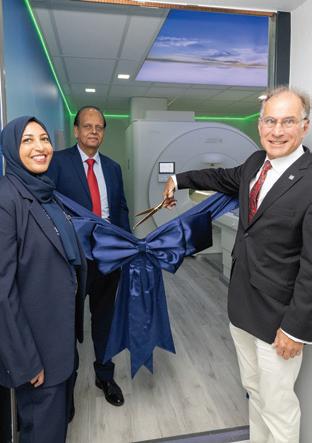
5. Clinical Versatility
From brain and spine imaging to joint, prostate, and vascular assessments, the uMR 780 is built for a broad spectrum of diagnostic needs. It also supports automated post-processing, including BrainAnalysis and PlaqueAnalysis, and is ready for advanced applications like functional MRI (fMRI).
BENEFITS FOR REFERRING DOCTORS
• Faster turnaround times and reduced scan backlog
• Sharper, consistent imaging for accurate follow-up and diagnosis
• Advanced imaging options for complex neurological, oncological, and musculoskeletal cases
• A smooth patient experience with minimal exam time and improved comfort
The uMR 780 is now open for referrals at Morton & Partners, Melomed Gatesville. To learn more or discuss referral protocols, please get in touch with our team.
HEARTY BEAN SOUP
Prep Time:
Overnight plus 15 minutes
Cook Time: 2 hours
The dried beans, lentils and veggles make this a filling soup for winter. Beans and lentils are a healthy source of protein.
INGREDIENTS
• 1 cup (250ml) dried sugar beans
• 1 tbsp (15ml) sunflower oil
• 2 carrots, chopped
• 1 onion, chopped
• 1 clove of garlic, finely chopped
• 8 cups (2 litres) Homemade stock or water with 3 tbsp dried mixed herbs
• 1 tbsp (15ml) dried mixed herbs
• 1 cup (250ml) uncooked brown lentils
• 4 tomatoes, chopped
• 1 tbsp (15ml) tomato paste
• 2 cups (500ml) thinly sliced cabbage or spinach
• ¼ cup (60ml) chopped fresh parsley
• 2 tsp (10ml) sugar
• ½ tsp (2,5ml) salt
• lemon juice and black pepper to taste

A steaming bowl of soup is a wholesome way to feed a family. Flavour your soups with herbs and spices instead of salty ingredients like stock cubes. A BOWL OF SOUP...
METHOD:
1. Soak beans in 1 litre of water overnight.
2. Heat oil in a large pot and fry carrots, onion and garlic.
3. Stir in the stock, dried herbs, lentils and beans.
4. Bring to the boil and reduce the heat. Simmer with a lid for 1 1/2 -2 hours or until the beans are tender.
5. Add tomatoes, tomato paste and cabbage and simmer for another 15 minutes. Stir in the parsley, sugar and salt.
6. Season with lemon juice and pepper.
Sources: http:/bookingfromtheheart.co.za/tfth-recipes/book oups/ http://www.eatingwell.com/tecipe/252305/honeyoat-quick-bread/

HONEY OAT BREAD
This honey-oat bread has incredible flavours, perfect with a delicious bowl of soup. It requires minimal mixing with ingredients usually stocked in the pantry.
METHOD:
1. Preheat oven to 180°C.
Prep Time: 15 minutes
Ready in: 2 hours 45 min
INGREDIENTS
• 1 cup (250ml) rolled oats, or quick-cooking (not Instant) oats
• 2 tbsp (30ml) oats for coating
• 1 1/3 cups (330ml) whole-wheat flour
• 1 cup (250ml) all-purpose flour
• 2 1/4 tsp baking powder
• 1/4 tsp baking soda
• 1 1/4 tsp salt
• 1 cup (250ml) low-fat plain yoghurt
• 1 large egg
• 1/4 cup (62,5ml) canola oil
• 1/4 cup (62,5ml) honey
• 3/4 cup (188ml) low-fat milk
2. Generously coat a 15 x 23cm loaf pan with cooking spray. Sprinkle 1 tablespoon oats in the pan and coat the sides and bottom.
3. In a large bowl, stir together whole-wheat flour, all-purpose flour, baking powder, baking soda and salt.
4. Using a fork, beat the oats, yogurt, egg, oil and honey in a medium bowl until well blended. Stir in milk.
5. Gently stir the yogurt mixture into the flour mixture until thoroughly incorporated but not overmixed. Scrape the batter into the pan, spreading evenly to the edges.
6. Sprinkle the remaining tablespoon oats over the top.
7. Bake the loaf until browned on top. 40 to 50 minutes. (It's normal for the top to crack.)
8. Cool in the pan on a wire rack for 15 minutes.
9. Turn it out onto the rack and cool for a further 45 minutes.
MEET ONE OF OUR DEDICATED SPECIALISTS
DR MAAHIR KARIEM
Tel: 021 110 5082 | Email: drm.kariem@gmail.com

DR. MAAHIR KARIEM IS A GENERAL SURGEON AND CURRENTLY PRACTICES AT MELOMED MITCHELLS PLAIN.



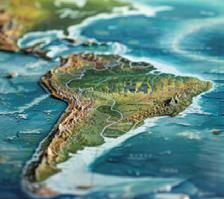
WHERE IS YOUR FAVOURITE PLACE TO EAT, AND WHY?
My mommy’s house because she makes the best food.
WHAT’S THE MOST FUN YOU’VE HAD THIS MONTH / YEAR?
Probably starting out in private practice and meeting new people.
WHY DID YOU CHOOSE YOUR PROFESSION?
I love people and I love to serve. I hate pain and suffering. This was my way to make a difference.
CAN YOU PLAY ANY INSTRUMENTS, OR WHAT WOULD YOU PLAY IF YOU COULD?
I can play the trumpet – well I used to.
IF A GENIE GRANTED YOU 3 WISHES RIGHT NOW, WHAT WOULD YOU WISH FOR?
Successful children, healthy parents, and a happy wife.
WHAT’S THE COOLEST STORY ABOUT YOURSELF?
I am an amateur DJ – self taught – I actually enjoy entertaining – my biggest crowd was 150 people but David Guetta only became famous at 40 so there’s still time.
IF YOU COULD WITNESS ANY EVENT OF THE PAST, PRESENT, OR FUTURE, WHAT WOULD IT BE?
Rugby World Cup Final 1995.
WHAT IS YOUR BEST CHILDHOOD MEMORY, AND WHY?
Probably our trip to Mecca when I was 12. That was probably when I realized the meaning of things for the first time.
WHICH CHILDHOOD MOVIE DO YOU STILL LOVE TODAY, AND WHY?
Karate Kid because Daniel Son hasn’t aged 1 day and he’s 60 now.
WHERE DO YOU MOST WANT TO TRAVEL, BUT HAVE NEVER BEEN?
South America.

EMPATHY, EXPERTISE, AND EXCELLENCE: Unveiling the Leading Obstetric and Gynaecological Team at Melomed Tokai!

Dr. Aneeqah Hendricks
Bringing New Life into the World
021 712 2691

Dr. Matshidiso Agnes Tisane Holistic Care for Women’s Health

Nurturing Life with Expertise & Passion
secretary@aneeqahhendricks.co.za
Meet Dr. Aneeqah Hendricks, a compassionate Gynaecologist and Obstetrician who finds immense joy in welcoming new life into the world. With a focus on achieving positive outcomes, Dr. Hendricks not only provides expert medical care but also connects on a personal level, drawing from her experience as a mother herself.
Dedicated to comprehensive patient care, Dr. Hendricks considers every aspect of her patients’ well-being, including socioeconomic and cultural backgrounds. She takes the time to understand individual needs, offering clear explanations and support throughout the journey. Beyond the hospital walls, Dr. Hendricks enjoys exploring the world through travel, indulging in movies, and cherishing quality moments with her own family.
Specialising in vaginal surgery, adolescent gynaecology, hormonal disorders, and reproductive endocrinology, Dr. Hendricks is your partner in women’s health at every stage. From family planning to menopause, she ensures her patients receive the best care, including surgeries, screenings, and personalized attention.
Introducing Dr. Tisane, a dedicated Gynaecologist and Obstetrician committed to the holistic well-being of women. As an Obstetrician, she brings vast experience in maternal and fetal care, guiding expectant mothers through the beautiful journey of pregnancy. Dr. Tisane believes in building strong patient relationships, ensuring effective communication, and providing comprehensive care with a personal touch.
Beyond her medical expertise, Dr. finds joy in the outdoors and values quality time with her own family. With a passion for helping mothers navigate the challenges of newborn care, she strives to make each patient feel heard and supported.
In addition, to her passion and expertise in Obstetrics, she also specialises in addressing gynaecological issues such as abnormal bleeding, infertility, and recurrent miscarriages, Dr. also conducts crucial screenings for cervical and breast cancer.
drtmog@gmail.com
Meet Dr. Tladiso Motsema, an experienced Obstetrician and Gynaecologist dedicated to nurturing life with a blend of medical and surgical expertise. Dr. Motsema’s journey in Obstetrics and Gynaecology started in 2011, driven by a passion for integrated patient care.
With a wealth of experience gained through a Diploma in Obstetrics and a fellowship in 2016, Dr. Motsema’s commitment extends beyond clinical practice. He takes pride in teaching and guiding future healthcare professionals, ensuring the legacy of compassionate and knowledgeable practitioners.
Patient care and wellness are at the forefront of Dr. Motsema’s priorities. From general obstetrics and gynaecology to contraception and family planning, he contributes to the community’s health, emphasizing the importance of a healthy mother for a healthy baby.
Join Dr. Motsema on the journey of wellrounded women’s healthcare.

.
RESPIRATORY SYNCYTIAL VIRUS
(RSV)
Respiratory syncytial virus (RSV) causes infections of the lungs and respiratory tract. RSV can cause severe infection in some people, including babies 12 months and younger, especially premature infants, older adults, people with heart and lung disease, or anyone with a weak immune system (immunocompromised).
Signs and Symptoms
Signs and symptoms of RSV infection most commonly appear about four to six days after exposure to the virus. In adults and older children, RSV usually causes mild cold-like signs and symptoms. These may include:
• Congested or runny nose
• Dry cough
• Low-grade fever
• Sore throat
• Sneezing
• Headache
Causes

Respiratory syncytial virus enters the body through the eyes, nose or mouth. It spreads easily through the air on infected respiratory droplets. You or your child can become infected if someone with RSV coughs or sneezes near you. The virus also passes to others through direct contact, such as shaking hands. The virus can live for hours on hard surfaces or objects such as countertops, crib rails and toys. If you touch your mouth, nose or eyes after touching a contaminated object and you're likely to pick up the virus.
An infected person is most contagious during the first week or so after infection. But in infants and those with weakened immunity, the virus may continue to spread even after symptoms go away, for up to four weeks.
Risk factors
While RSV is generally mild in adults, risk factors may include:
• Are over age 65
• Have a compromised immune system
• Have heart disease, including congenital heart disease
• Have chronic lung conditions, like asthma
In some cases, RSV can lead to severe complications like pneumonia or bronchiolitis, particularly in older adults. Hospitalization may be necessary for individuals with severe RSV infections, especially if they require oxygen or other respiratory support.
